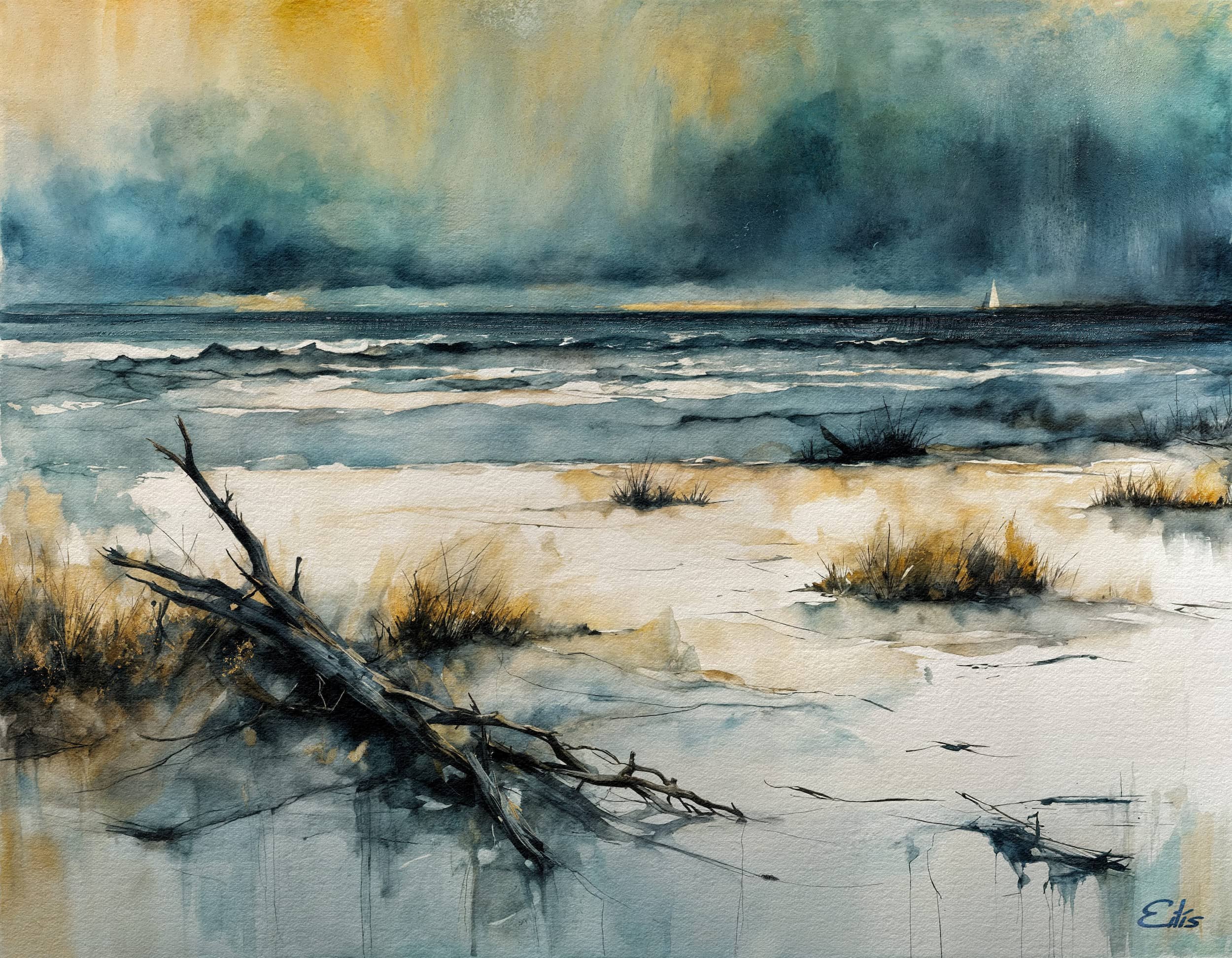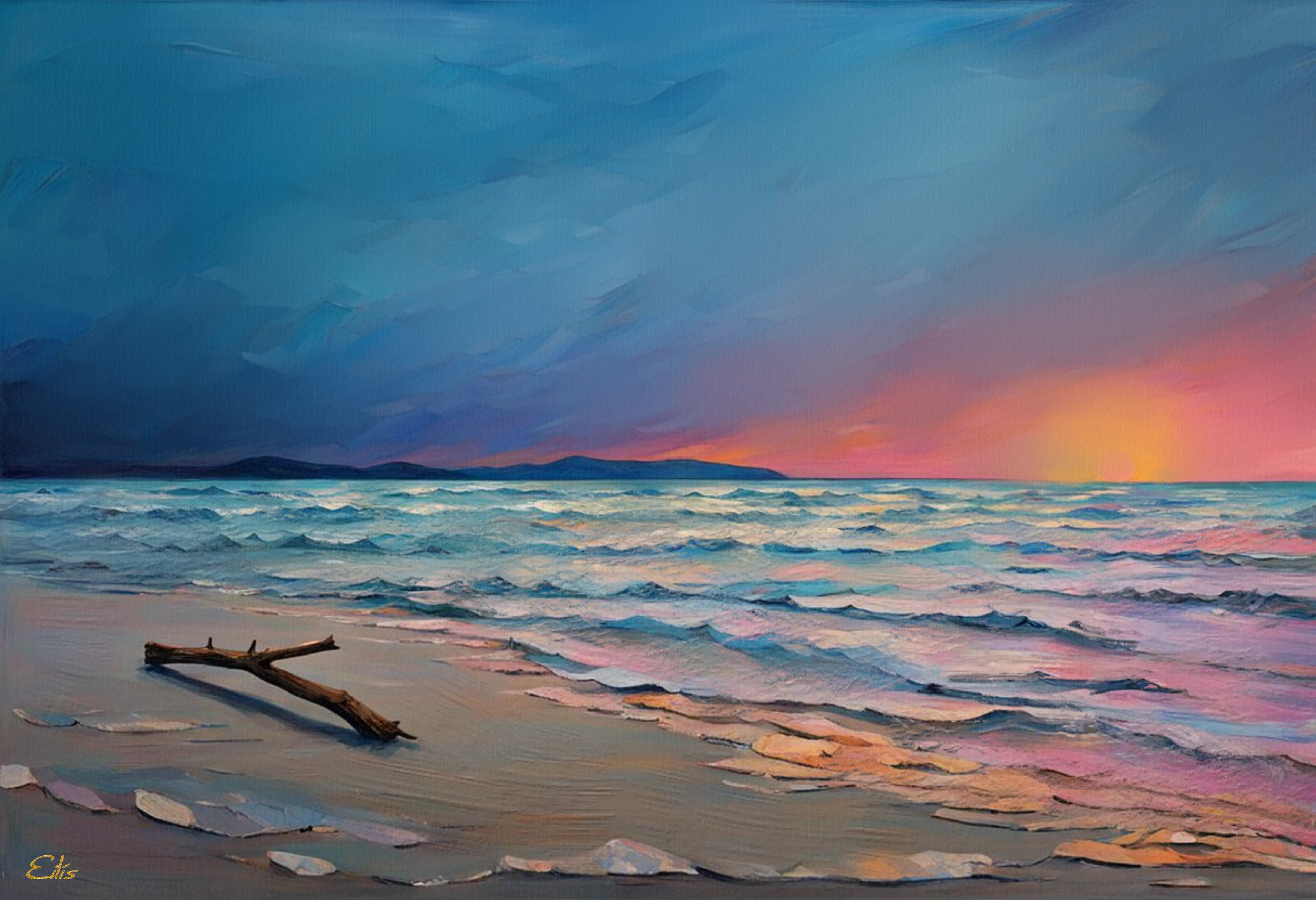
The driftwood
Meditations on transience
The driftwood lay half-buried in wet sand, its pale, salt-bleached form curving like a question mark against the shore. Once, it had been part of something purposeful—a strut, perhaps, or a rudder—some essential component that had kept a vessel true against capricious currents. Now it rested, stripped of utility, worn into something that existed purely in its own right.
The tide ebbed, leaving behind a slick patina on the wood's surface that caught the waning afternoon light. Each ridge and whorl of grain told its own story of storms weathered, of passages undertaken, of seas traversed before this final abandonment. The wood remembered what the beach had forgotten; it carried within its fibres the memory of motion, of cutting through waves rather than being subsumed by them.
On the horizon, nearly invisible against the blurred line where the sea met the sky, a boat sailed. Its white sail caught what remained of the day's light, a tiny triangular beacon moving steadily eastward. The vessel was too distant for anyone to discern whether it was a fishing craft returning late or a pleasure boat making for the next harbour along the coast. Its purpose remained as inscrutable as its destination.
Between the driftwood and the boat stretched an expanse of restless water, grey-green and mutable, a space of severance and connection. The wood watched the boat with the dispassionate gaze of the abandoned. There was no longing in this observation, merely recognition—one seafarer acknowledging another across an unbridgeable distance. What linked them was not sentiment but substance: the knowledge of what it meant to be shaped by water's persistent touch, to be both strengthened and diminished by its attention.
The boat would continue its journey, maintaining the illusion of self-determination against the sea's vast indifference. The driftwood would remain, gradually dissolving back into the elements from which it had been crafted. Each represented a different stage of the same circular journey—one still in service to human intention, the other released from it, returned to the natural world that had birthed it before human hands had intervened.
As shadows lengthened across the beach, the distinction between driftwood and boat became increasingly academic. From a sufficient distance, both were merely motes against enormity, temporary arrangements of matter moving through time at different velocities, their significance entirely dependent on perspective and the patient mercy of the observing eye.


